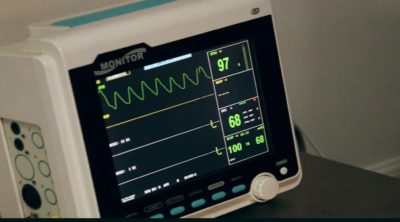The types of dialysis are classified according to the need of the patient undergoing this medical procedure. This life-saving measure has proved to be beneficial to patients whose kidneys have ceased to function.
When the kidneys become weak and are unable to function properly, thereby failing to filter toxic waste from the body, dialysis may be required. This is a medical procedure which mimics the function of the kidneys. The dialysis machine acts as an external kidney and helps purify the blood and flush out harmful chemicals and toxins from the body. The kidneys are vital organs in the body that are a part of the excretory system. The main function of these bean shaped organs is to filter and purify the blood and eliminate waste in the form of urine from the body. Due to many reasons, these organs may get affected and fail to perform their function. This situation can be life-threatening in nature which may also prove to be fatal in some cases. To avoid this, the individual may have to undergo dialysis. Based on the medical condition and circumstances of the patient, the type of dialysis to be administered can be determined.
Types and Process of Dialysis
Dialysis is a medical procedure which the person (whose kidneys have ceased to function) has to undergo in order to eliminate harmful byproducts from the body. Though the main function is the purification of blood in the body, there are two kinds of kidney dialysis processes. The type is based on the severity of the kidney disease and also on the requirement of the patient. These medical processes may be carried out in the in-patient or out-patient department. Sometimes, in special cases where the patient cannot be shifted to a hospital, the dialysis can also be administered at home with a help of a relative who has been given proper instructions by the physician.
Hemodialysis
In hemodialysis, a needle, similar to that of an IV is inserted into the blood vessel. Normally, there are two needles that are used in this process. One needle carries the impure blood from the body to the machine and the other brings back filtered blood in the body. A vascular access with an AV graft, arteriovenous (AV) fistula, venous catheter are needed for this procedure. An AV fistula is usually preferred, and is supposed to be the best access, since it facilitates optimal blood flow. The needle is attached, with the help of a tube, to the dialysis machine. The dialysis fluid, which is a solution of mineral ions is then passed into the bloodstream. The blood travels from the body into the machine where it is filtered of toxic waste. The purified blood is then transported back into the body, through the second needle. The average time for a hemodialysis session is about 3 hours.
Hemodialysis is of different types, based on the requirement of the individual. The physician may chalk out the appropriate one for the patient, based on the severity of the kidney disease. For the in-center dialysis, the patient may be required to visit a hospital or dialysis center for about 3 times per week. This may take up to 5 hours for completion per day. Once the patient is familiar with the process, he can avail home dialysis, where the dialysis is carried out at home with the assistance of a trained person, particularly a relative. This day hemodialysis takes about 3 hours for every session. There is also another type of hemodialysis which can be done at night. Nocturnal home hemodialysis can be done overnight while the patient sleeps for about 3 to 7 nights per week. The duration of each session can last for up to 8 hours.
Peritoneal Dialysis
As the name suggests, in peritoneal dialysis the equipment is attached to the peritoneum or the membrane in the stomach. Patients suffering from intense chronic kidney failure undergo this dialysis. This is a lesser known procedure, which is becoming common these days. The peritoneum or the stomach membrane is used like a filtering device for unwanted albumin, electrolytes, glucose, urea etc. This may be performed at night when the patient sleeps or during the day. A tube is attached to the stomach through which there is an exchange of fluid, and the toxic waste is flushed out of the body. Inserted through a tiny incision in the abdomen, the tube transports dialysis fluid to the peritoneum. The blood in the peritoneal cavity is filtered and excess fluid and waste products are expelled into the dialysis fluid, which is then drained from the cavity to the bag attached to the other end of the tube. The stipulated time taken for completion of peritoneal dialysis can be anywhere between 4 to 6 hours. Peritoneal dialysis can be further classified according to the schedule of administering it.
Continuous ambulatory peritoneal dialysis (or CAPD) is the kind which involves the draining of the dialysis solution in the abdomen, and is undertaken without the use of machine. The individual undergoing CAPD is free to move around and can even have it while sleeping. The solution, along with the wastes is eliminated from the body after a gap of 4 to 6 hours. There can be a couple of sittings, which may be determined by the doctor. Normally, a person may have to take three or four fluid exchanges in a day and one exchange while sleeping. Another type of peritoneal dialysis, which is the continuous cycler-assisted peritoneal dialysis (CCPD) is typically carried out with the help of a small machine. Also referred to as automated peritoneal dialysis (APD), this dialysis has controlled timing for the exchange of the fluid to take place. This is usually done at night, where there may be up to five exchanges. Daytime, there is one sitting which may last for the full day.
Side Effects of Dialysis
There are also some negative effects of dialysis on the body. These few side effects may occur in both hemodialysis as well as peritoneal dialysis. These may arise when the body remains attached to the dialysis equipment for a prolonged period of time.
- One of the most common effects seen on patients of both hemodialysis and peritoneal dialysis is fatigue. This condition can mainly arise as a long term effect of the treatment on the body. Combined with dietary restrictions, loss of normal kidney function, anxiety and stress associated with the treatment, all this can take a toll on the body and person may appear to be fatigued almost all the time.
- Muscle cramps, especially in the lower part of the body, may also be experienced by patients of dialysis. This is due to the fact that there is considerable fluid loss during the process, which may affect the muscles causing them to become weak and prone to cramps.
- Excessive accumulation of potassium can trigger itching sensation and irritation in the skin of individuals receiving dialysis, especially hemodialysis. This may become intense, if potassium keeps getting deposited in the body. One of the best ways to avoid this problem is reduce the intake of potassium in the diet.
- In case of peritoneal dialysis, the person may suffer from peritonitis, which may arise due to infection in the peritoneum. Infection can be caused due bacteria present in the unsterilized equipment. Symptoms may include nausea induced vomiting, loss of appetite, extreme pain and burning sensation in the abdomen, excessive thirst, tachycardia (rapid heartbeats), high grade fever and inability to pass urine, without triggering pain etc.
- Hernia is also a common complaint in patients receiving dialysis. Persons under peritoneal dialysis are at a greater risk, since the fluid buildup in the abdomen may put a strain on the muscles, thereby weakening them. The weak muscles are more prone to organs pushing through them, and formation of lumps in the peritoneal cavity.
Dialysis has proven to be a boon for patients whose kidneys do not function properly. The type and duration for dialysis will be determined by the health care provider after analyzing the health of the patient.


